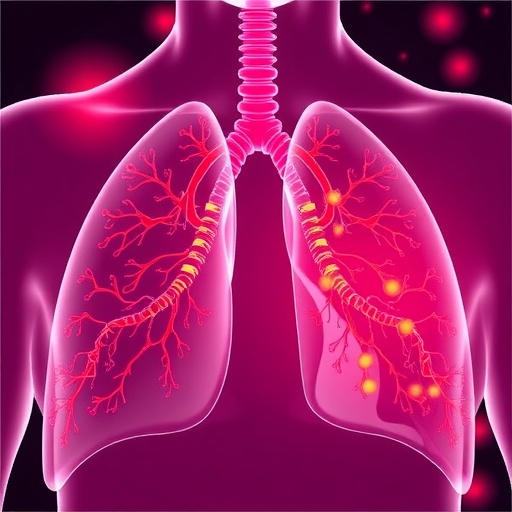
Benzoyl peroxide has long stood as a foundational treatment in the fight against acne, a condition that plagues many individuals globally. While it is widely recognized for its efficacy, recent discussions have emerged surrounding potential safety concerns linked to certain formulations of benzoyl peroxide that may generate benzene—a compound identified as a carcinogen. These concerns, while possibly lacking in immediate clinical significance, underscore the need for scrutiny in product development processes and ingredient selection to ensure not only the effectiveness of acne treatments but also their safety.
The primary focus of this investigation was to comprehend the influences behind benzene formation in benzoyl peroxide products. Our research team undertook a comprehensive analysis of 111 different benzoyl peroxide-containing products, delving into various parameters such as product categories, age, and ingredient profiles. The goal was to illuminate how differences in formulation and manufacturing practices correlate with existing benzene levels, providing clarity on the safety of these products while identifying opportunities for enhanced formulation strategies.
One of the pivotal findings of our study revealed a clear relationship between benzene levels and specific ingredient characteristics alongside differences in production processes. For instance, products exhibiting elevated benzene levels frequently contained components that suggested they had undergone exposure to higher temperatures during their manufacturing phase. On the other hand, those with significantly lower benzene levels often featured higher concentrations of antioxidant agents, such as butylated hydroxytoluene, and acidic compounds like benzoic acid. These results point towards the notion that formulation could play a crucial role in minimizing benzene presence, and manufacturers should consider optimizing production protocols and ingredient compositions to foster safer products.
This research fosters a crucial dialogue concerning the safety of benzoyl peroxide-containing formulations. By emphasizing the role of production methods and ingredient selection, we can pave the way toward creating more secure products for acne treatment, ensuring they perform effectively without compromising user safety. The data we procured serve as a valuable reference point for manufacturers seeking to address these emerging safety concerns while maintaining the efficacy of their products.
Amid the discussions about the potential for benzene formation, our findings arouse optimism. We can dispel the notion that benzoyl peroxide products inherently degrade into harmful levels of benzene under normal conditions. Instead, the variations we observed in benzene levels can substantially be attributed to how each product is formulated. Such insights can assist regulatory bodies, manufacturers, and consumers in making informed decisions and bolster the development of safer treatments in the cosmetic and pharmaceutical markets.
In light of these findings, the next logical step in our research involves evaluating potential modifications to both formulation and production practices. By focusing on deliberate adjustments to ingredients and manufacturing processes, we can aim to substantially reduce the chances of benzene developing in benzoyl peroxide formulations, thereby alleviating the safety concerns tied to these popular products.
Moreover, our research offers vital actionable hypotheses aimed at enhancing the safety measures surrounding these essential acne products. Manufacturers can leverage this data to guide their product development priorities and ensure that they adhere to the highest safety standards possible, thus fostering public trust and mitigating fears linked to the use of benzoyl peroxide against acne.
The public’s confidence in such treatments comes from not only their demonstrated effectiveness but also a transparent understanding of their safety profiles. We hope that the insights gained from our analysis will positively contribute to ongoing conversations amongst healthcare professionals, manufacturers, and consumers, ultimately leading to the creation of an industry standard that emphasizes safety alongside efficacy.
As consumers become more informed about product ingredients and formulations, their demand for transparency and safety grows. This study serves as a reminder of the importance of continuous research and dialogue about cosmetic and pharmaceutical safety practices. By prioritizing safety, we can create a more trustworthy and effective framework for acne treatment that caters to the needs and concerns of all stakeholders involved.
Now, as we draw upon the critical dialogues initiated by our research, it is incumbent upon both manufacturers and regulatory bodies to consider these findings as essential input into future product formulation and safety assessments. The collective goal remains to eliminate any misconceptions and reinforce trust in the efficacy and safety of benzoyl peroxide-containing products, affirming their place as a lasting staple in acne treatment.
Through these endeavors, we can shift towards a paradigm where consumer safety is of utmost priority within the cosmetic and dermatological fields. The results of our work will ideally stimulate further research, promote stricter manufacturing standards, and ultimately lead to innovation in product formulation that emphasizes both effectiveness and safety in addressing acne.
In conclusion, this study provides a critical lens on the formulation of benzoyl peroxide products, highlighting the need for ongoing research, improved manufacturing practices, and greater engagement with consumer safety concerns. As evidenced in the findings, careful consideration of ingredient profiles and production processes holds the key to revolutionizing the landscape of acne treatment.
Subject of Research: The role of formulation on benzene formation in benzoyl peroxide products
Article Title: The role of formulation on benzene formation in benzoyl peroxide products
News Publication Date: 12-Feb-2025
Web References: DOI: 10.1001/jamadermatol.2024.6443
References: Barbieri J et al.
Image Credits: N/A
Keywords: Benzoyl peroxide, acne treatment, benzene formation, product safety, formulation, production processes, dermatology, carcinogen.
Tags: acne medication safety assessmentacne treatment efficacybenzene carcinogen concernsbenzene levels in skincare productsBenzoyl peroxide formulation safetybenzoyl peroxide product analysiscomprehensive analysis of benzoyl peroxide productsformulation strategies for skincareingredient selection for acne treatmentsmanufacturing practices in skincareresearch on benzoyl peroxidesafety of acne treatment products





